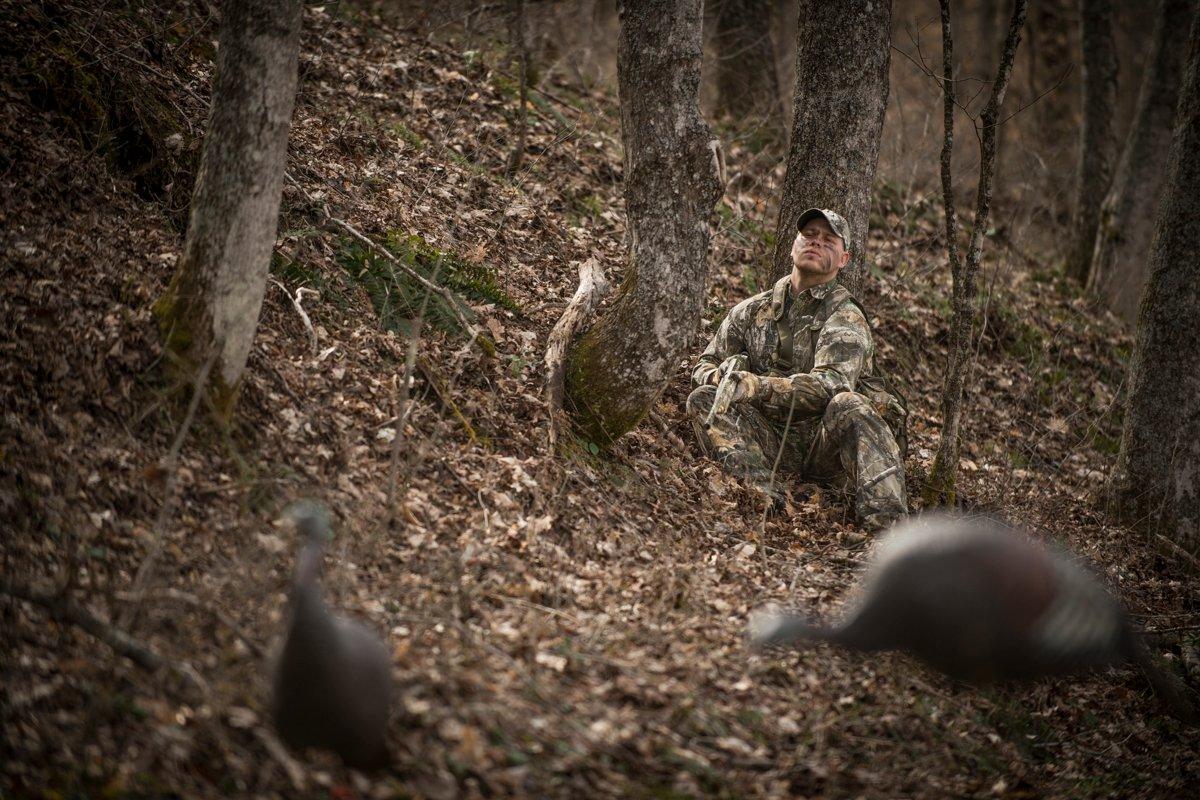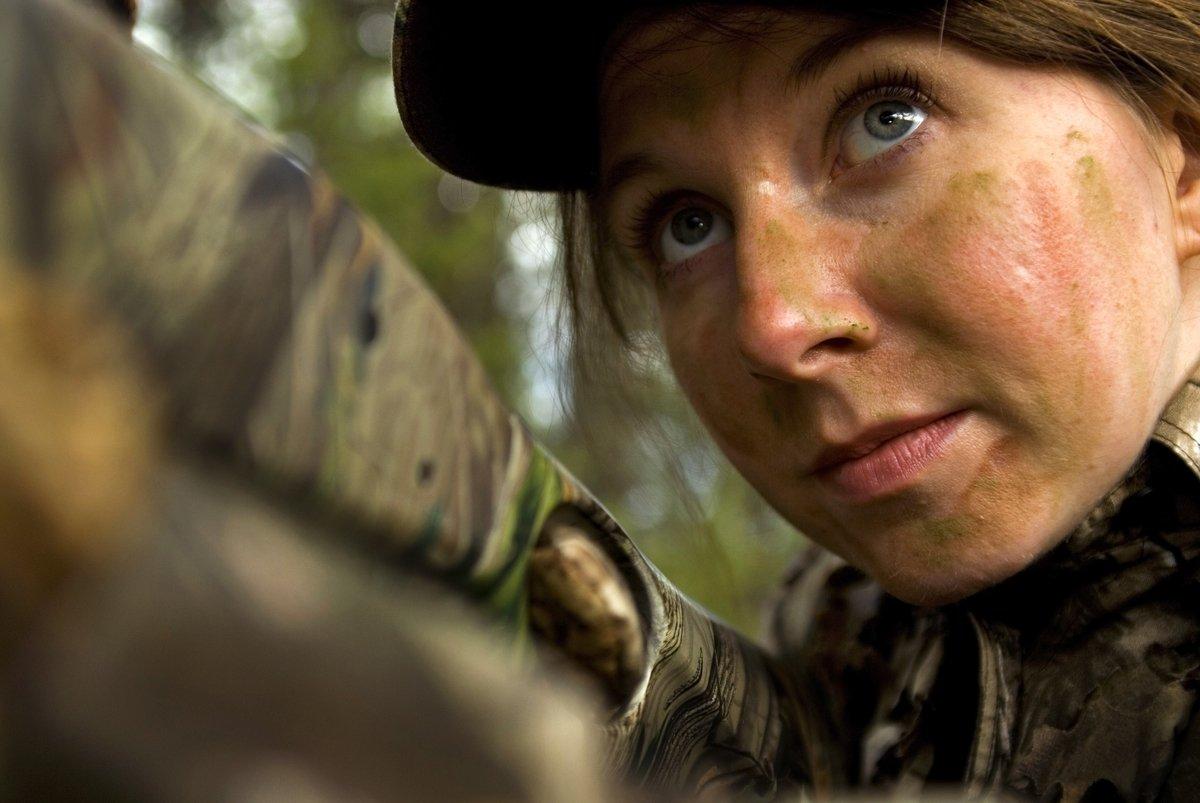Ready. Aim. Fire. Right?
As the saying goes, "If you haven't missed a turkey, you aren't hunting enough."
I did plenty of research to write this piece - all of it unintentional.
Lessons learned from such experiences follow here . . .
1. Shooting Too Fast
The flock suddenly appeared, materializing on the high Pennsylvania ridgetop. Driven by target panic, I raised my gun, swiftly took aim at a legal turkey, and fired. While I fully expected the bird I'd aimed at to drop, it didn't. Just gave me a look like, Dang, that was some loud noise. At that, it sailed down the hollow in the direction of the other wing beats.
If you've done this, take a second or two if possible to assess the situation.
Take aim slowly and surely, mentally rehearsing the shot before you make it. It's one I've relearned again over the years.
Here's where to aim on a turkey.
2. Shooting Too Close
Some gobblers answered our calling on the nearby hilly rise, thundering through the afternoon Texas heat. Somehow that wasn't enough to tell me they were on the approach. When they popped up just five steps away, I wasn't ready.
Like the previous example decades before, target panic caught me looking. The two gobblers that strode by in front of me were about to bear witness to my effort at whiffing consistency.
At the shot, they strode away. I froze. Detecting no movement, they eased into a patch of cover. I yelped softly on my mouth call. Both of them stepped out, looking. One of them ran off.
Second chances feel like a gift.
You may miss turkeys, know why, and repeat the same mistake again.
Missed turkeys can be held in shooting range if you don't move after the whiff, and call softly on a diaphragm immediately after.
You can kill one if you hang in there, take aim and drill it right the second time. (Even if it's at 47 yards instead of spitting distance as I did with this one.)
3. Shooting Too Casual
Okay, you've killed a few turkeys. Maybe more than a few. You've figured the deal out. (Yeah right.)
Missing turkeys isn't just for newbies. Veteran hunters with many a long spur to their credit can blow the shot just as easily as a novice.
Texas again. Different hunt. Different year. I'd burned one of my tags on a beautiful 23-pound Rio that crossed a huge field full of bluebonnets, and came right into the calling. Maybe I'd gotten cocky, had my fill.
Second tag in my pocket, I set up on a gobbler that had flown down off the roost on my late approach. No matter. He was on the ground and I'd call him in. In he came. I watched the scene somehow weirdly detached from the action. Maybe I was tired. More likely I was too cocky.
I watched him strut in range for a long time. Finally I realized just maybe I should raise my shotgun and close the deal. So I did. The swarm of pellets sailed past him as I failed to put cheek to stock, watching the beautiful scene.
Sick.
Been there, too? Here's what you learned the hard way, as I did.
You may have done everything right the day before, but that doesn't mean it'll all fall into place the next time. You've got to stay serious; both relaxed but also steadily focused.
Fundamentals never go out of style. Mounting a shotgun should be second nature to some of us. Funny how quickly those details go out the window when you watch the birdie instead of shooting it in the head.
4. Shooting Disagreements
Let's face it, when we hunt alone, most of us don't talk to ourselves all that much. If we do, well . . . When we hunt with a buddy though, that all changes. Add a video camera to the mix, and you might have some trouble.
Missouri. TV hunt, or at least that was the intention. The cameraman and hunt host, who also insisted on doing all the calling, had roosted the turkeys. All I had to do was to wake up on time, make sure my gun was loaded, and take aim.
We slinked in there early. Set up. Made ready. My host tree-called. The gobbler answered. A hen or two softly yelped up there on the far branches. Wings ticked the tree limbs, and in they came. In range, not too far and not too close, Strutter Boy picked a little open spot in the woods, and set up shop there. The hens milled about, ignoring his obvious beauty.
Shoot him, right? Wrong. I instantly surveyed a thick sapling and others between my gun's muzzle and the gobbler. Of all the places in the woods to strut! I wanted to wait it out of course. My host and certainly the TV guy had other plans. Boom. Bird down. Cut. That's a wrap.
Kill 'm, my host hissed.
Can't, tree in the way, I whispered.
This exchange repeated itself enough that the average onlooker would have thought us insane.
Need you to take that shot, he emphasized.
Silence on my end. Then my delayed shot.
I wasn't sure if I was ticked off or physically ill. Sort of an angry and nauseated cocktail you could say, like dropping a pass in the end zone. Ugh. The lessons?
Don't take the shot even if it looks right to the other guy who may not have the same view as you.
The camera guy needed the hunt on film. The host wanted to satisfy both of you. You wanted to kill a turkey, and maybe get it on film.
The truth: There's no shame in letting a turkey walk. Be patient. There are other gobblers in the woods to hunt.
There's no winner here - except for maybe the gobbler you scared off.
5. Shooting New Guns
I love using new guns, don't get me wrong. Still, the honeymoon after the marriage is usually a rush job if you're borrowing a loaner from a buddy. Try to get to know that firearm before the hunt.
Shoot paper targets. Do it at appropriate ranges (20-40 yards). Use the load you'll tote in the field. Get a feel for that shotgun.
Most of the time I've done fine with the loaner gun. If it's pretty close to the make and model I favor, then the learning curve is usually not so steep a hill to climb. The fit might be close to perfect. Or not.
That first turkey I missed was a long time ago. The next one might come on the next hunt, but not if I can help it.
Know your gun.
If it's a loaner, don't be afraid to ask questions about the firearm if it's unfamiliar to you.
If it's tricked out with a scope, and you're a bead-sight shooter, well then you definitely need to get familiar with the program.
Tips: Closing the Deal
A wild turkey steps into range. Scouting, locating, calling and reducing your wallet's weight have all paid off. Time to close the deal. But suddenly that black eye drills you. The big gobbler flicks a wing and turns. It's now or never, man. Wait a second and it might just mean never. But let's back up a bit.
How can you avoid missing a bird from start to finish?
- Set up against a tree that is at least as wide as your shoulders, and high as your Realtree-covered head.
- Make sure you have a clear view of shooting lanes in front of you, and to each side.
- If you're hunting with a buddy, know where he or she is sitting.
- Establish ranges in which you'll shoot, either you alone, or you and your partner.
- If your turkey is moving toward your shooting lanes and calling, point your shotgun or bow in that direction, slowly flowing with the action.
- When that bird appears, use landmarks to reference shot distances.
- Limit your movement. Adjust your position when the turkey's head is behind a tree or another object.
- Take the shot only when the bird has been fully identified, and the head and neck are exposed.
- Visualize the mental shot before you pull the actual trigger.
- Listen. Watch. Anticipate. Close the deal.
Go here for more Realtree turkey hunting. Check us out on Facebook.










